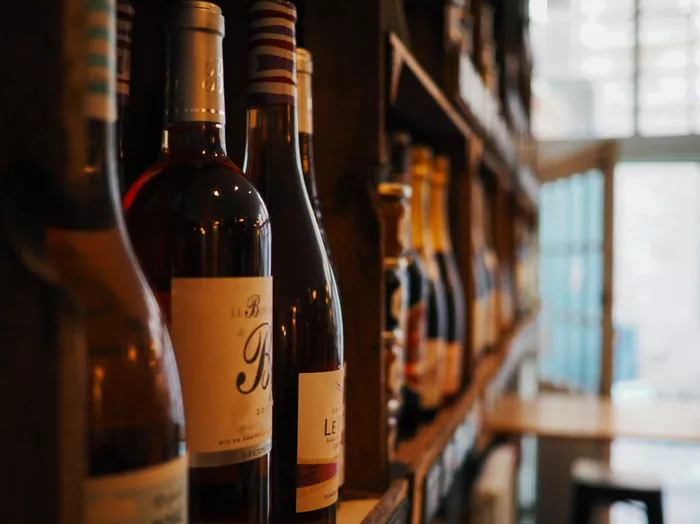Champagne is synonymous with celebration and luxury, and among the diverse array of champagne brands, Belaire Rosé Champagne stands out as a distinctive and captivating choice. In this article, we’ll explore the essence of Belaire Rosé Champagne, from its origins and production methods to its signature characteristics and appeal.
1. The Origins of Belaire Rosé Champagne
Belaire Rosé Champagne has a unique and intriguing history.
Birth in France: Belaire Rosé Champagne is produced in the heart of the Champagne region in France, where some of the world’s finest sparkling wines are crafted.
Luc Belaire Winery: The brand Belaire emerged from the renowned Luc Belaire Winery, which was founded in the early 21st century. This relatively new entrant in the world of champagne has quickly gained a reputation for its innovation and style.
2. Production Process
Belaire Rosé Champagne is created through a meticulous and precise production process.
Grapes: Belaire Rosé is made primarily from a blend of Syrah, Grenache, and Cinsault grapes, which contribute to its unique flavor profile and pink hue.
Traditional Method: The winemaking process adheres to the traditional méthode champenoise, involving a secondary fermentation in the bottle, which creates the signature bubbles and effervescence.
3. Signature Characteristics
Belaire Rosé Champagne is known for its distinct flavor and appearance.
Flavor Profile: Belaire Rosé Champagne is celebrated for its vibrant fruitiness, with notes of strawberries, blackberries, and cherries, complemented by a touch of floral and citrus undertones.
Color: Its striking pink color, often referred to as “rosé,” adds an element of visual appeal to the experience.
4. Versatility and Popularity
Belaire Rosé Champagne has gained popularity for its versatility.
Celebration: It is often chosen for special occasions and celebrations, adding a touch of elegance to weddings, parties, and gatherings.
Mixability: Beyond being enjoyed on its own, Belaire Rosé Champagne is a favored ingredient in cocktails like the “Belaire Mimosa” and “Belaire Luxe Rose Sangria.”
5. Global Recognition
Belaire Rosé Champagne has made a mark on the global stage.
Iconic Presence: The brand has achieved global recognition and is often associated with the world of music, fashion, and entertainment.
Celebrity Endorsement: Many celebrities and influencers have endorsed Belaire Rosé Champagne, contributing to its popularity and allure.
Conclusion:
Belaire Rosé Champagne is a captivating and modern expression of champagne-making, offering a sensory journey that combines the best of tradition and innovation. Its origins in the Champagne region of France and the meticulous production process result in a champagne that is celebrated for its fruity flavor profile and striking pink color. Whether you’re raising a glass in celebration or seeking an elegant and versatile champagne for special moments, Belaire Rosé Champagne has secured its place as a distinguished choice in the world of sparkling wine.
FAQs about Belaire Rosé Champagne:
1. What sets Belaire Rosé Champagne apart from other champagnes?
Belaire Rosé Champagne is known for its vibrant fruitiness, with distinctive notes of strawberries, blackberries, and cherries, which make it stand out from other champagnes. Its striking pink color also sets it apart visually.
2. Is Belaire Rosé Champagne considered a luxury champagne?
Yes, Belaire Rosé Champagne is often associated with luxury and elegance. Its connection to fashion, music, and entertainment has contributed to its reputation as a sophisticated choice for special occasions.
3. Can Belaire Rosé Champagne be used in cocktails?
Yes, Belaire Rosé Champagne is versatile and can be used in a variety of cocktails. Some popular options include the “Belaire Mimosa” and “Belaire Luxe Rose Sangria.” Its fruity flavor profile adds a delightful twist to cocktails.
4. What food pairs well with Belaire Rosé Champagne?
Belaire Rosé Champagne pairs well with a range of foods, including seafood, salads, fruit dishes, and desserts like fruit tarts and sorbets. Its fruit-forward character complements various culinary choices.
5. Is Belaire Rosé Champagne available in different sweetness levels?
Yes, Belaire Rosé Champagne is available in various sweetness levels, including Brut and Demi-Sec. Brut is dry and crisp, while Demi-Sec is moderately sweet. The choice depends on personal preferences.
6. Can you visit the Luc Belaire Winery in France?
The Luc Belaire Winery in France is not typically open to the public for tours, as it primarily focuses on production. However, you can often find Belaire Rosé Champagne at wine shops, liquor stores, and restaurants for purchase.
7. Are there other wines or champagnes produced by Luc Belaire?
Yes, Luc Belaire produces a range of wines and champagnes, including Belaire Luxe, Belaire Gold, and Belaire Brut, each with its own unique characteristics and flavor profiles.
8. What is the recommended serving temperature for Belaire Rosé Champagne?
Belaire Rosé Champagne is best served chilled, typically between 45°F and 50°F (7°C to 10°C). This temperature range ensures that its fruity and refreshing qualities are fully enjoyed.
9. Can I age Belaire Rosé Champagne like some other wines?
Belaire Rosé Champagne is best enjoyed young and fresh. It is not typically aged for extended periods like some still wines. It is designed to be consumed shortly after purchase to capture its lively and fruity character.
10. Is Belaire Rosé Champagne a popular choice for weddings and celebrations?
Yes, Belaire Rosé Champagne is often chosen for weddings, parties, and celebrations due to its elegant appearance and appealing flavor profile. It adds a touch of luxury and sophistication to special occasions.
11. Does Belaire Rosé Champagne have any environmental sustainability initiatives?
Belaire Rosé Champagne, like many wine producers, may have sustainability initiatives in place to reduce its environmental impact. However, specific initiatives can vary, so it’s worth exploring the brand’s website or contacting them directly for details.


